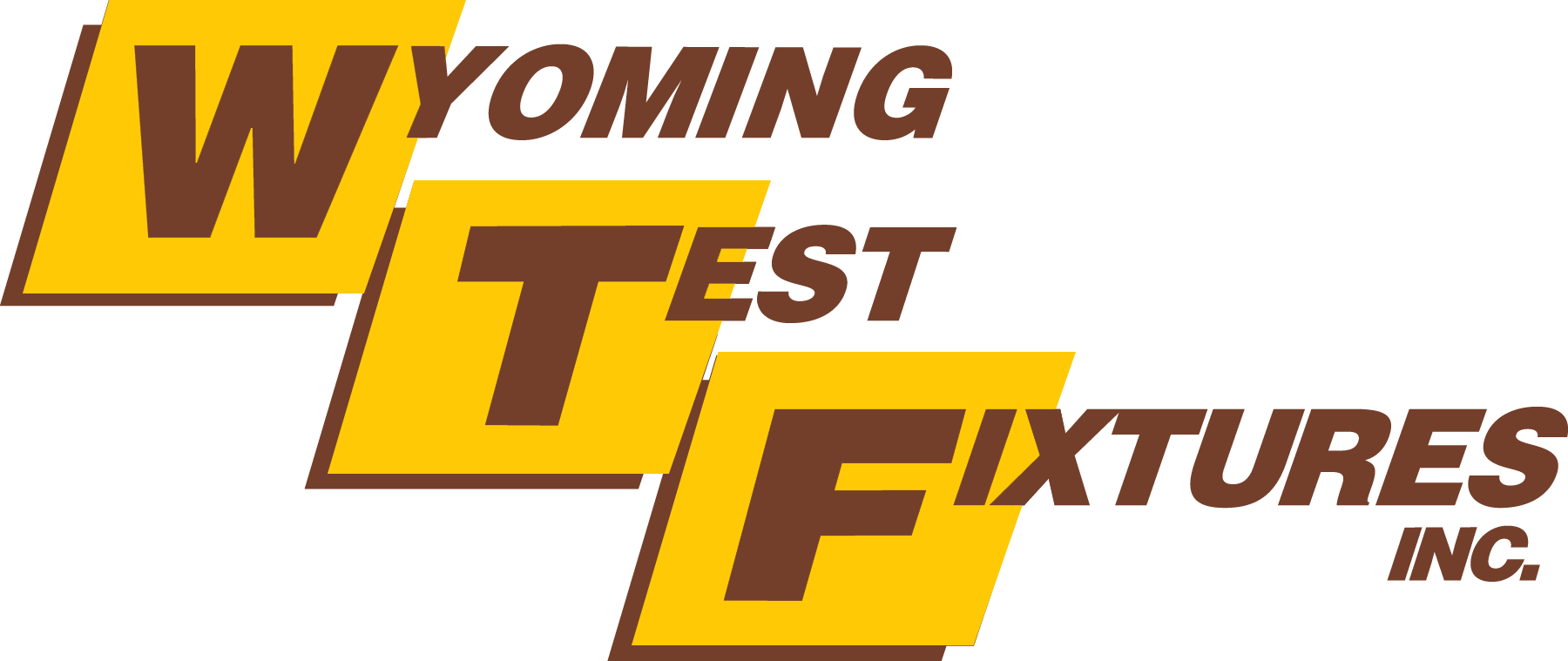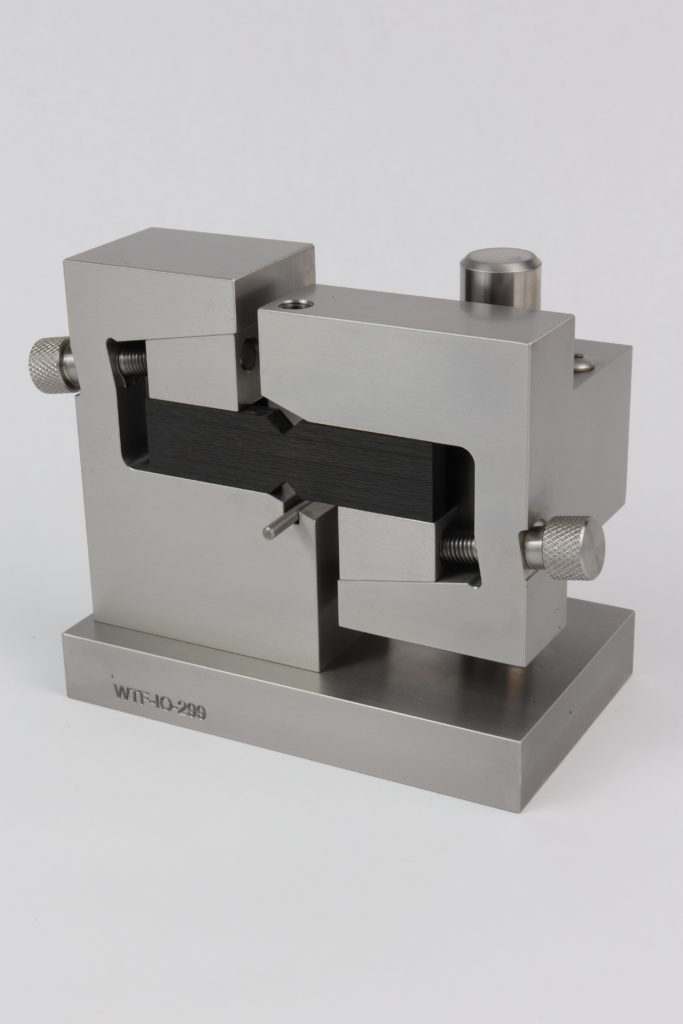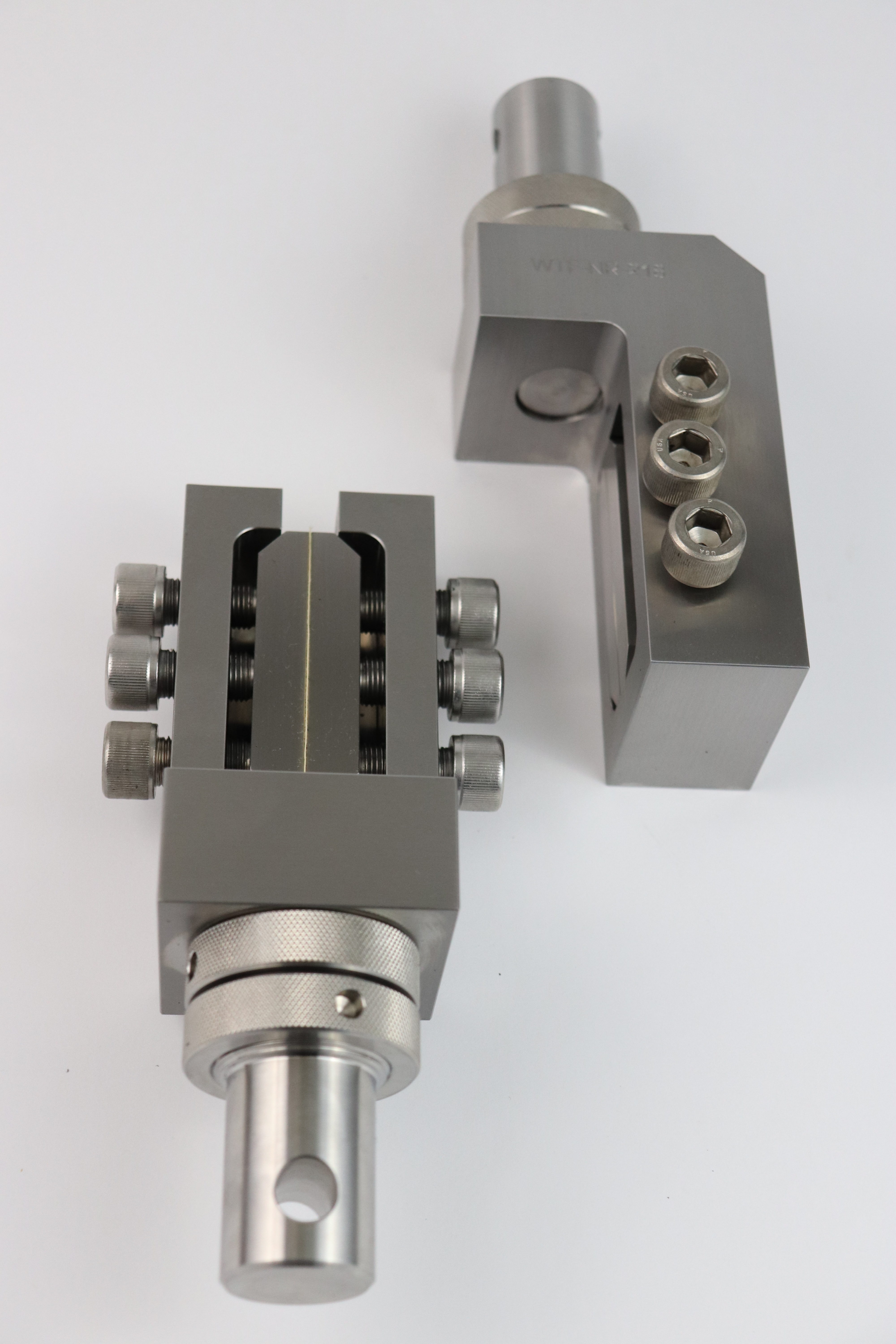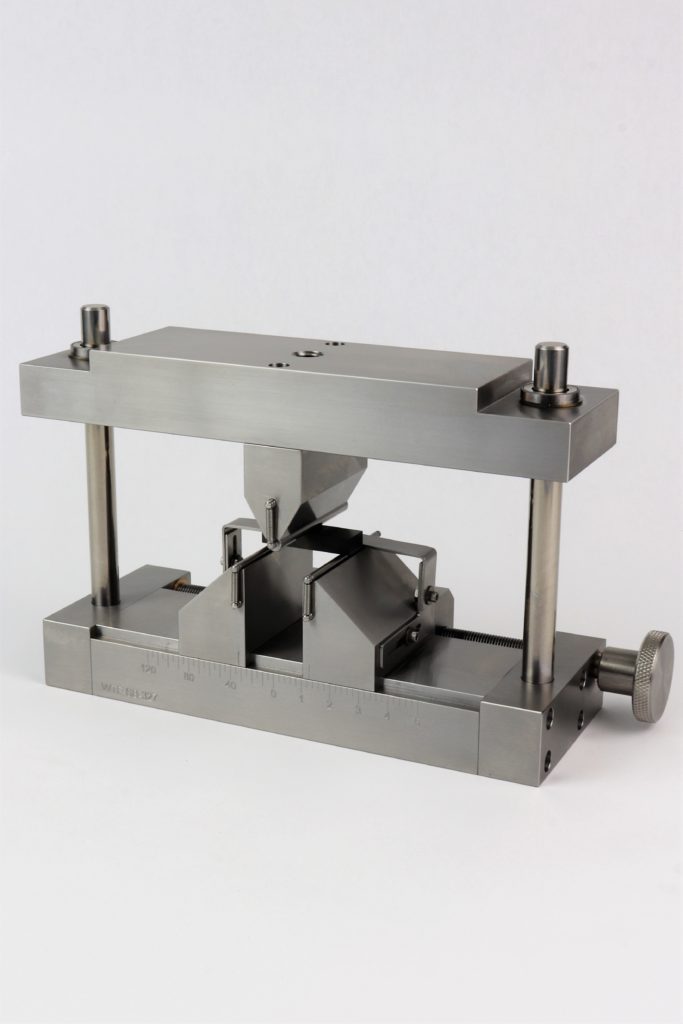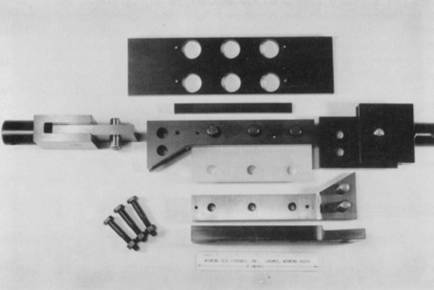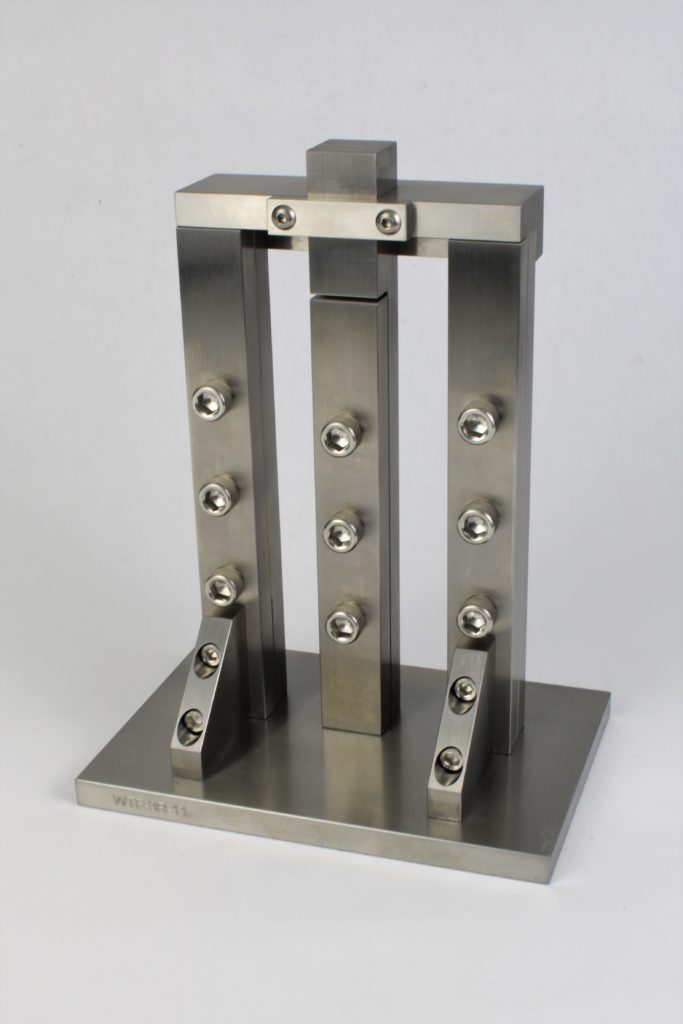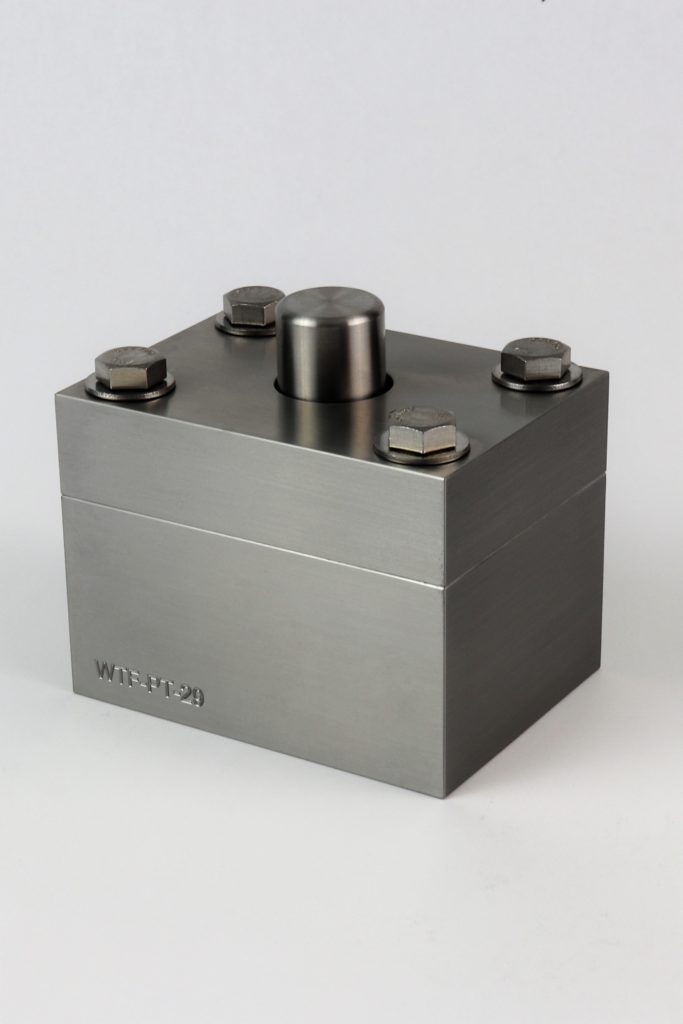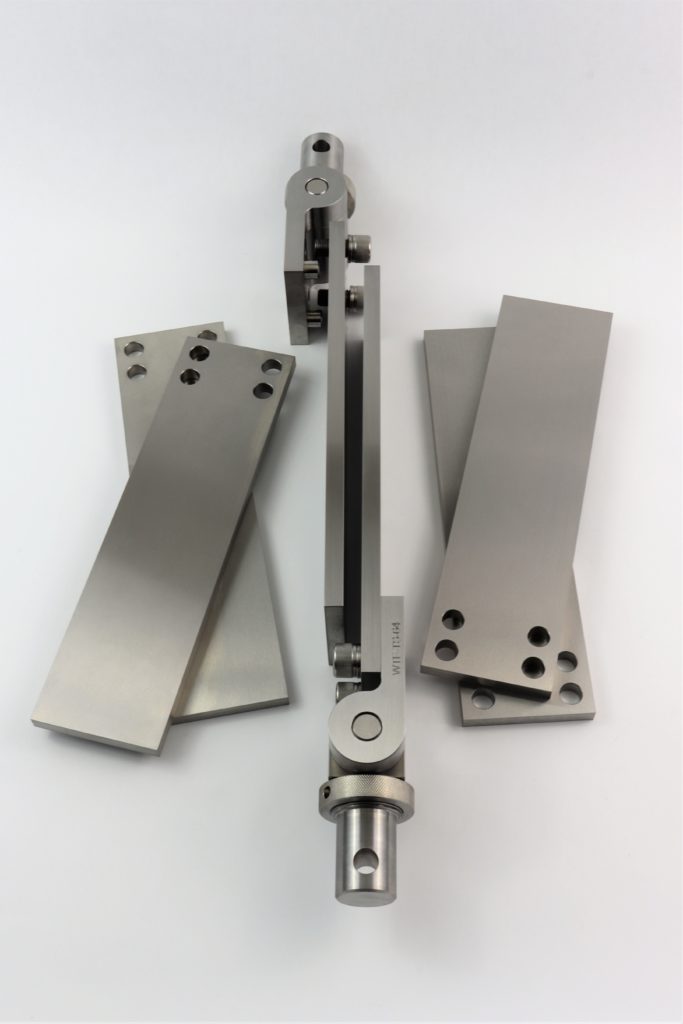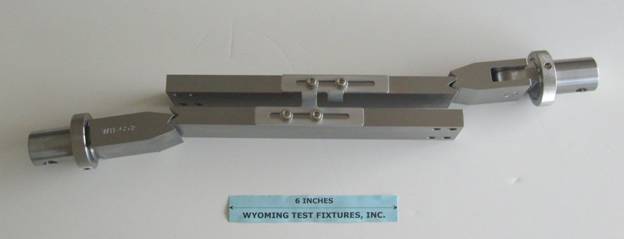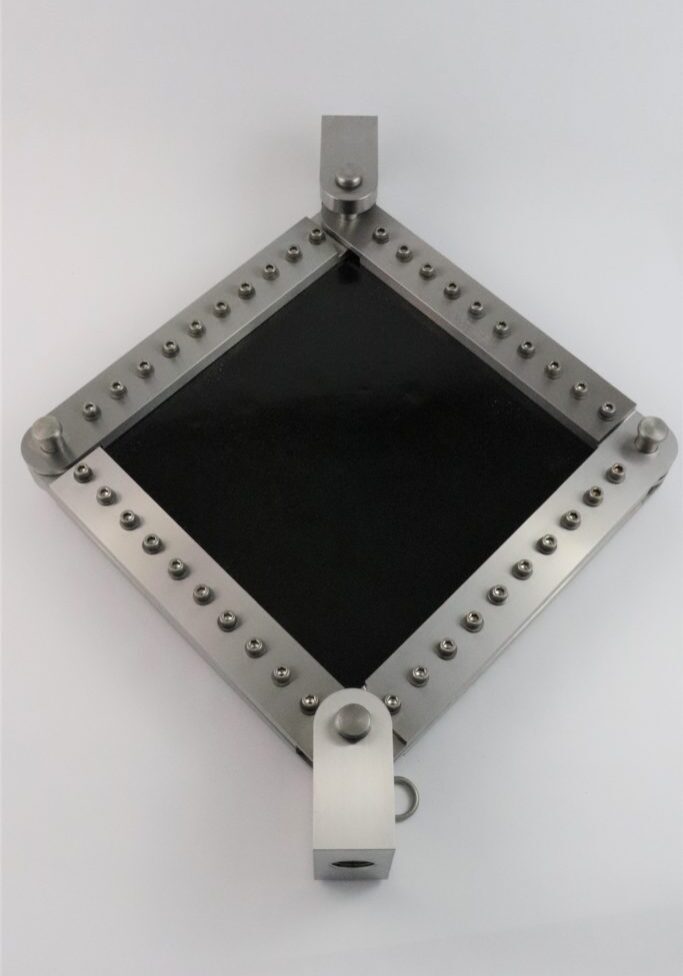Shear Test Fixtures
A variety of standardized test methods exist for shear testing of composite materials, including both in-plane and interlaminar shear tests. Additional shear test fixtures are listed for testing of sandwich composites, of fasteners, of rubber and foam, and a wide variety of other materials.
A-1:Iosipescu Shear Test Fixture
ASTM D5379
Developed in the late 1970's and early 1980's at the University of Wyoming, the Iosipescu shear test produces a uniform shear state due to two v-notched grooves in the specimen. This fixture can test the shear strength and modulus of all three stress states, but is limited to either unidirectional or cross-ply laminates.
A-2:V-Notched Rail Shear Test Fixture
ASTM D7078
Similar to the Iosipescu shear test, the V-Notched Rail test uses two v-notches in the specimen to produce a uniform shear state. This fixture uses a wider specimen, resulting in a longer gauge section. Load is applied to the specimen faces through coated grips, making it possible to test off-axis laminates with high shear strength.
A-3:Short Beam Shear Test Fixture
ASTM D2344
The Short Beam Shear test method is by far the most popular shear test, and is ideal for quality control and material screening.
However, the test does not produce a uniform shear stress state in the specimen, so results should only be used comparatively to other Short Beam Shear tests.
A-4:Two-Rail Shear Test Fixture
ASTM D4255
The Two-Rail Shear test uses a larger specimen that requires precise holes. More material and specimen preparation are required, and the V-Notched Rail test was designed with the specific intention of improving the shortcomings of this test method.
A-5:Three-Rail Shear Test Fixture
ASTM D4255
Similar to the Two-Rail Shear test, the Three Rail Shear test uses a large specimen with drilled holes. The Three Rail Shear test has the advantage of loading the specimen symmetrically, but is still quite limited when compared to the Iosipescu or V-Notched shear tests.
Intended for use as a materials screening and materials comparison (non-quantitative) test for sheets or molded disks of plastic, this punch type shear test can accommodate specimen thicknesses from 0.050" to 0.500". The shear force is simply calculated as the maximum force applied divided by the shear area (punch circumference x specimen thickness).
Either a sandwich panel or the core material itself can be tested, in shear parallel to the flatwise plane. A unique feature of the Wyoming Test Fixtures, Inc. design is that the same fixture can be used to apply either a tensile or a compressive loading, although a tensile loading is most commonly utilized.
A-8:Special Sandwich Panel Shear Test Fixture
ASTM C273
This fixture performs the same functions as Model WTF-TS while incorporating the separate tension and compression loading mode configurations indicated in ASTM Standard C 273. Bonding plates for both this fixture and WTF-TS are designed so that, whether used in the tension or the compression loading mode, both surfaces can be used. This doubles the life of the bonding plates.
A-9:Picture Frame Shear Test Fixture
ASTM D8067
The Picture Frame Shear Test Fixture in its various forms has been around for many years. It was originally developed as an in-plane shear test method for solid laminated materials such as plywood and composite laminates. More recently, it has also increasingly been used for in-plane testing of sandwich panels of all types.
